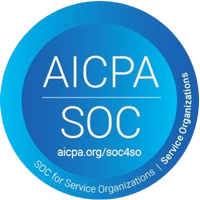It can take a long time to fill vacancies in healthcare. But is that really the problem we should focus on? It’s possible that speed-to-hire, which measures how long it takes to move a candidate through your hiring process, is an even more important metric.
Speed-to-Hire and Time-to-Fill: What’s the Difference?
Even if you aren’t familiar with speed-to-hire, you might know time-to-fill. These terms are related, but distinct from one another. Tracking each of them can give you helpful insight into your hiring process, along with what might be going wrong.
Defining Time-to-Fill
Time-to-fill refers to the whole length of a vacancy. This starts when a position opens up—either someone leaves or a new role is created—and ends when that open position gets filled.
Since this metric covers such a long period of time, there are many factors that influence it. Slow recruiting, screening, and poor candidate communication can all make vacancies drag on.
Defining Speed-to-Hire
Speed-to-hire is a little different. This metric measures the average time it takes you to hire an individual candidate. In other words, this is the speed at which you move a candidate through your hiring process.
Say, for example, that you’ve found a great candidate for an open CNA position. Imagine that it takes you ten days to complete interviews, ten days to decide you want to make them an offer, and another ten days to send out the job offer and receive their signature. In this scenario, your speed-to-hire would be thirty days.
Unlike time-to-fill, speed-to-hire does not count the time it takes you to attract top talent. Some businesses might use the phrase speed-to-hire interchangeably with the phrase time-to-hire.
Why Time-to-Fill Isn’t Healthcare’s Biggest Problem
A lengthy time-to-fill might look alarming, but by itself, it’s really not the most informative metric.
Think about it this way: time-to-fill covers your entire recruiting and hiring process. A lot can go wrong (and right!) during this period. It’s definitely a problem if you can’t meet your staffing ratios, but time-to-fill alone doesn’t tell you why this is happening. And while the underlying causes might be troubling, they also might be totally conventional.
Across the board, positions that require a lot of education and specialized training take longer to fill than positions with lower barriers to entry. For example, it takes an average of 154.5 days to fill vacancies for Data Engineers. By comparison, it takes around 29 days to hire a housekeeper.
And one more thing: many healthcare positions are continuously open. If you’re always looking for new nurses, it might look like you have positions that you never fill, even if you are making hires.
Healthcare is a broad industry that staffs a huge number of positions. You probably have plenty of roles that can only be filled by people with highly specialized credentials—and plenty of roles that require fantastic work ethic, attitude, and empathy, but no specific training.
Lumping all healthcare positions together and reporting on your time-to-fill doesn’t tell the full story. Yes, it’s troubling if you can’t find enough qualified candidates. But if your time-to-fill is being skewed by the time it takes to find specialized clinical workers, that’s not the end of the world.
What Speed-to-Hire Can Tell You (That Time-to-Fill Can’t)
Because speed-to-hire focuses specifically on the hiring portion of your process, it can give you information that time-to-fill can’t.
When speed-to-hire slows down, you know that it’s not because of a problem with recruiting or onboarding. It is an indication that something is going wrong with your actual hiring period.
A slow speed-to-hire might indicate that you have a problem in one of these areas:
- It takes too long for you to send a job offer
- You have issues with interview scheduling
- You have lapses with your candidate engagement, and as a result, you fall out of touch with top talent
- In general, it takes too long for you to communicate with candidates, from your initial reach-out to follow-ups
- You’re failing to create a positive candidate experience, so your applicants aren’t excited about accepting your role
- Candidates don’t get enough information about the job during recruiting, so they need a lengthy period of time to think over whether they should take the job
What to do about these problems? Start by asking candidates about their experience. Candidates who didn’t accept your job offer can actually be extremely helpful here. You might send out a short survey asking for feedback about why they didn’t take the position. If you get a lot of responses saying it’s because they took another job, that’s your sign that you need to hire faster.
Is It Still Worth Tracking Time-to-Fill?
Even though time-to-fill can’t tell you everything about your hiring process, it’s absolutely still worth tracking this metric.
Why is time-to-fill still helpful? Well, when you compare time-to-fill against your speed-to-hire, you can see if hiring is your biggest issue, or if you really do have a problem with candidate sourcing.
Imagine that your average speed-to-hire is thirty days. Now, if your time-to-fill is forty-five days, that tells you it takes you about fifteen days to find qualified candidates. That’s half the time it takes you to hire someone. In this case, you might focus on speeding up your hiring process.
If your time-to-fill is sixty days, though, it’s taking you just as long to source candidates as it does to screen, interview, and hire them. If this sounds more like you, you probably need to work on your strategy to attract applicants.
A long time-to-fill can mean that you need to work on your recruiting—especially if your time-to-fill is much longer than your speed-to-hire. Here are a few ways to recruit faster:
- Optimize your job descriptions so the right people apply
- Distribute your jobs to the right sites automatically with recruiting software like Apploi
- Work on your employer reputation so more candidates want to work for you
- Use quick apply so candidates can send in their materials more easily
- Reach out to past candidates to see if they’d be interested in applying again
How Does Speed-to-Hire Affect Candidate Acquisition?
So does speed-to-hire have anything to do with candidate sourcing? You bet it does.
Improving your speed-to-hire is basically the same thing as creating a more efficient hiring process. Candidates move through hiring more quickly, without waiting around to hear back after submitting an application or completing an interview. That amounts to less frustration for the candidates and an overall better candidate experience.
If candidates have an easy experience moving through your hiring process, they’ll be more likely to re-apply in the future and represent you well in their network. Want to learn more about improving your reputation among candidates? We explored candidate engagement in-depth in our recent free ebook.
How to Improve Speed-to-Hire With Apploi
Apploi weaves together healthcare recruiting, onboarding, and hiring on one platform. In other words, we let you manage every part of staffing from one place, so you don’t have to waste time moving information between systems.
Here are a few of the ways Apploi helps our customers reduce days-to-hire by up to 71%:
- Automated workflows to move hiring along even when you’re away from your desk
- Automatic job post distribution to dozens of the leading job sites
- Unlimited texting (did you know that candidates are 2.5 times more likely to respond to a text than an email?)
- Social media integrations so you can tap into social recruiting
- Role-based user permissions so you can collaborate with your whole team
- Professional career page branding to attract the best
- Interview scheduling and guides to help you standardize your screening process
- Automatic credential verification and ongoing re-verification
- Offer letters and paperwork management so you can jump right into onboarding
- Guidance and assistance from our team of healthcare HR and recruiting professionals
Interested in learning more about how you can recruit, hire, and onboard healthcare staff quickly? Contact us today for a free demo of our software solution.




